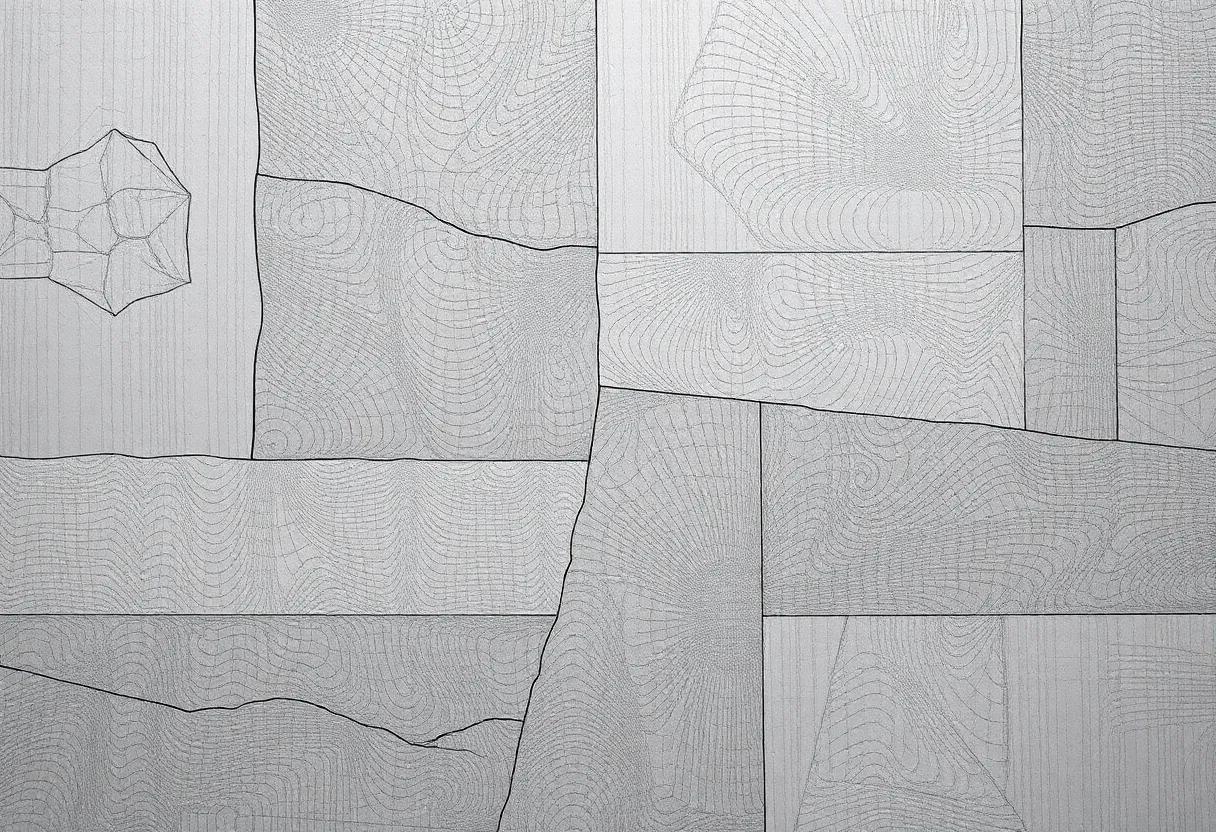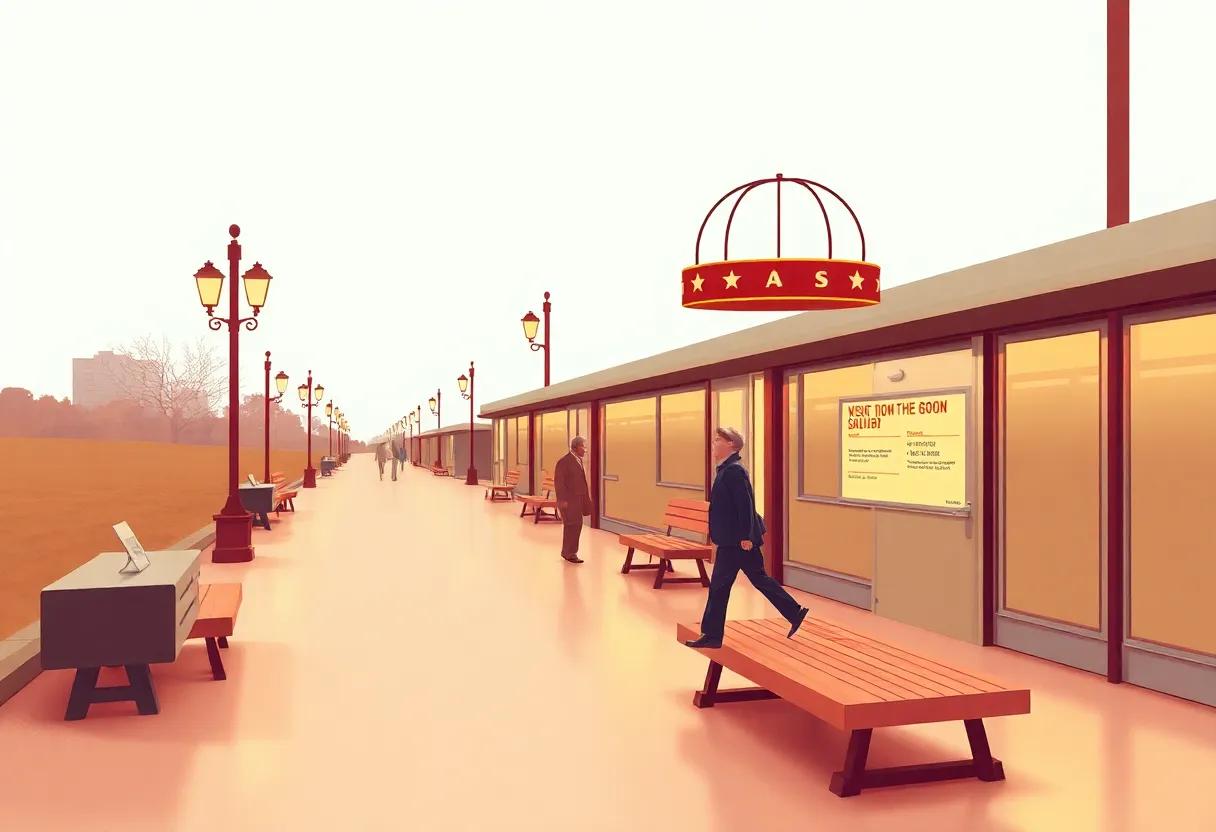In Jennifer Egan’s A Visit from the Goon Squad, time is less a linear path and more a tangled web, where past, present, and future collide in unexpected ways. This Pulitzer Prize-winning novel invites readers to journey through a kaleidoscope of characters and moments,each fragment revealing the elusive nature of memory and the relentless passage of time. Through inventive narrative structures and shifting perspectives, Egan unravels how our lives are intertwined with the marks we leave and the memories we carry-sometimes vivid, sometimes fragmented, always shifting. This review explores how A Visit from the Goon Squad challenges conventional storytelling to illuminate the complexities of human experience across time.
Exploring the Fragmented Narrative structure and Its Role in Depicting Time and Memory
Jennifer Egan’s novel thrives on a narrative mosaic, where stories intersect, overlap, and occasionally contradict, weaving a tapestry that mirrors the irregular nature of human memory. The fragmentation disrupts the traditional linear timeline,allowing moments of past,present,and future to coexist in a fluid continuum.This structure mimics how we recall our lives-not as a neat sequence but as flashes of emotion, faded images, and incomplete thoughts. Through this approach, readers are invited to piece together characters’ histories and futures, emphasizing the elusive and multifaceted experience of time itself.
Within this patchwork of perspectives, the role of memory becomes central-both as a personal archive and a disruptive force. Egan uses techniques such as:
- shifting viewpoints across chapters, giving insights into different characters’ subjective experiences
- Nonlinear timelines that challenge cause and effect, emphasizing emotional resonance over chronology
- Interspersed genres and media, from screenplay formats to PowerPoint slides, capturing fragmented modern interaction
| Fragmented Element | Effect on Narrative |
|---|---|
| Multiple temporal jumps | Disorients yet deepens understanding of time’s fluidity |
| Varied narrative styles | Reflects fractured memory and modern media saturation |
| Disconnected character arcs | Highlights isolation and interconnection in human experience |
This deliberate fragmentation not only replicates the complexities of remembering and forgetting but also enhances the thematic exploration of aging, loss, and redemption throughout the novel, making the reader an active participant in reconstructing the story’s temporal puzzle.
the Interplay of Technology and Human Connection Through egan’s Unique Storytelling Techniques
Jennifer Egan weaves a rich tapestry where technology and human relationships blend seamlessly, challenging traditional narratives and inviting readers to explore the fluidity of time through innovative storytelling. Her use of nonlinear chronology mirrors the fragmented nature of memory, while digital elements-like the famous PowerPoint chapter-do more than just embellish the story; thay act as catalysts for connection, reflecting how modern communication shapes and sometimes distorts intimacy. Through this dynamic interplay, Egan captures the dissonance and synchronicity present in our tech-driven interactions, revealing the paradox of feeling both connected and isolated in an increasingly digital world.
Within A Visit from the Goon Squad, characters navigate a landscape where technology amplifies their searching for meaning, yet also highlights their vulnerabilities. The narrative becomes a mosaic of voices, each anchoring a moment where past and present collide, revealing how memories are both preserved and altered through technology’s lens. This is evident in the way storytelling itself adapts, employing unconventional formats and structures to emphasize the characters’ emotional landscapes and fragmented experiences:
- Interactive and multimedia-inspired chapters
- Shifts between prose and visual elements
- Nonlinear timelines reflecting psychological states
- Focus on generational shifts mediated by technology
| Storytelling Aspect | Effect on Human Connection |
|---|---|
| Nonlinear Narrative | Highlights memory’s impermanence |
| Technological Formats | bridges gaps between characters |
| Multiple Perspectives | Builds multifaceted empathy |
| Temporal Juxtapositions | Reveals consequences over time |
Character Evolution as a Lens for Understanding the Passage of Time and Its Emotional Impact
Jennifer Egan masterfully uses the evolution of her characters to mirror the relentless, frequently enough disorienting, passage of time. Each conversion-whether subtle or dramatic-serves as a tangible marker of the years slipping away, illustrating how personal growth and decay are intertwined with memory and experience. Through characters like Bennie and Sasha, readers witness not just physical aging but profound shifts in identity, aspirations, and regrets. This gradual character growth acts as a prism, refracting the complex emotional hues of nostalgia, loss, and hope embedded in the narrative.
By examining these characters’ trajectories, we gain insight into the multifaceted emotional impact time imparts. The oscillation between youthful idealism and somber reflection is highlighted through recurring motifs and interconnected stories, emphasizing that time reshapes relationships as much as it reshapes selves.Consider the following emotional states linked to key phases in character growth:
- innocence and aspiration – Early stages marked by optimism and undefined potential.
- Disillusionment and conflict – Middle phases where cracks in dreams emerge and challenges intensify.
- Reflection and reconciliation – Later years characterized by a complex processing of past choices, with moments of both forgiveness and regret.
| Character | Phase | Emotional Core |
|---|---|---|
| Bennie | Youth to Middle Age | Ambition tinged with melancholy |
| Sasha | Young Adulthood to maturity | Resilience amidst vulnerability |
| Julia | Midlife | Seeking meaning amid chaos |
Memory’s Unreliability and the Blurring of Past and Present in the Novel’s nonlinear Timeline
In A Visit from the Goon Squad, memory is less a trusted archive and more a shifting mosaic-each fragment colored by emotion, perspective, and time itself. Egan masterfully blurs the line between past and present, inviting readers to navigate a timeline that folds, fractures, and overlaps. Characters remember not only events but feelings and identities that evolve or dissolve in the act of remembering, suggesting that memory is inherently unstable and subjective. The nonlinear structure echoes this,as moments jump across decades,reshaping our understanding of cause and result.
The novel portrays memory through:
- Fragmented Narratives: Disjointed snapshots that refuse linear continuity.
- Multiple Perspectives: contrasting recollections that highlight contradictions and bias.
- Temporal Ambiguity: scenes where past and present blend,erasing clear chronological boundaries.
| Memory Aspect | Effect on Timeline | Reader’s experience |
|---|---|---|
| Selective Recall | Gaps and omissions | Creates mystery and ambiguity |
| Emotional Coloring | Distorted events | Elicits empathy and doubt |
| Retroactive interpretation | Rewriting history | Challenges fixed meanings |
How Egan Uses Musical motifs to Weave Themes of Nostalgia and Transformation Throughout the Book
Jennifer Egan masterfully intertwines musical motifs as a narrative device, creating a rich tapestry that echoes the bittersweet pulse of nostalgia and the inexorable flow of transformation. Throughout the novel, recurring references to songs and sounds act as temporal anchors, pulling characters-and readers-into moments suspended between past and present. These motifs are not mere background elements but active agents that shape the emotional landscape, evoking the fragility of memory and the relentless march of change. the fragmented rhythms of Egan’s prose mimic the syncopated beats of music, reinforcing themes of loss and renewal as characters grapple with their evolving identities.
- Echoes of the 1970s and 80s: Vintage tracks symbolize lost innocence and the longing for simpler times.
- Shifting Playlists: characters’ changing musical tastes mirror their personal growth and shifting perspectives.
- Sound as Connection: Music bridges generational divides, linking characters in unexpected ways.
| Musical Motif | Theme embodied | Character Example |
|---|---|---|
| The ’70s Rock Anthem | Nostalgia & youthful Idealism | Bennie’s early ambition and lost dreams |
| Electronica beats | Transformation & Modernity | Sasha’s reinvention and future-facing outlook |
| Jazz Improvisation | Memory & Fluid Identity | Cooler’s adaptability and reflection |
The Significance of Setting and Era Shifts in Enhancing the Story’s Temporal Ambiguity
Jennifer Egan masterfully manipulates time through deliberate shifts in setting and era, weaving a tapestry that blurs the boundaries between past, present, and future. The novel’s fragmented structure, jumping from the 1970s punk scene to the digital age, creates a landscape where memories and moments overlap, evoking a haunting sense of temporal dislocation.These transitions compel readers to actively reconstruct timelines, highlighting the fluidity of memory and how personal and cultural histories intermingle. The disjointed timelines underscore the intangible nature of time itself, emphasizing how the past continuously reshapes the present in unexpected ways.
Through this technique, Egan also challenges linear narrative expectations, using varied locations-from Brooklyn basements to futuristic tech conferences-as temporal anchors that destabilize fixed chronology.The interplay between eras is not just a backdrop but an active force driving character development and thematic depth. Consider the following elements that enhance this temporal complexity:
- Shifting Cultural Landscapes: Each setting encapsulates distinct social moods that echo through characters’ lives.
- Technological Evolution: Advancements act as markers of time but also blur distinctions between eras.
- Intergenerational Perspectives: Characters’ experiences across decades create a multifaceted narrative lens.
| Era | Setting | Temporal Effect |
|---|---|---|
| 1970s | Brooklyn punk scene | Nostalgic disaffection and raw beginnings |
| 1990s | Music industry offices | Shifting ambitions and industry decay |
| 2000s | Silicon Valley conferences | Technological futurism challenges现实 |
Narrative Voices that Challenge Reader Perceptions of Truth and Subjective Memory
Jennifer Egan masterfully employs an array of narrative voices that complicate conventional understandings of truth and memory, inviting readers to question the reliability of every perspective. Through fragmented storytelling and shifts in point of view, A Visit from the Goon Squad destabilizes the linear flow of time, presenting memories as inherently subjective, malleable constructs rather than fixed facts. Each character’s version of past events blends personal biases, regrets, and desires, revealing how memory can be both a sanctuary and a distortion. This mosaic of voices encourages readers to become active participants in piecing together a multi-layered truth that resists resolution.
- Epistolary entries provide intimate yet partial glimpses into the characters’ consciousness.
- Unconventional formats like PowerPoint slides blur the line between storytelling and memory reconstruction.
- Temporal disruptions evoke the fluidity and fragility of recollections over decades.
| Voice Type | Effect on Perception | Example |
|---|---|---|
| First-person | Subjective, intimate distortions | Sam’s nostalgic reflections |
| Third-person limited | Filtered reality through observation | Bennie’s career struggles |
| Nonlinear narrative | Confuses chronology, mirrors memory | Chapters out of sequence |
The Role of visual Elements and Experimental Formatting in Reinforcing the Novel’s Themes
Jennifer Egan’s innovative use of visual elements and experimental formatting in A Visit from the Goon squad does more than just catch the eye-it actively immerses readers in the fragmented experience of time and memory. The novel challenges conventional storytelling through its playful layout choices, such as the chapter “Black Box,” presented entirely in powerpoint slides. This unconventional format mirrors the fragmented, bullet-pointed way we consume modern facts and recall memories, reinforcing the theme that time is rarely linear and our recollections are often nonlinear and piecemeal. By visually disrupting the reading flow, Egan invites readers to engage with the text on multiple sensory levels, symbolizing the disjointed nature of human experience.
Beyond the slide chapter, the novel incorporates various stylistic devices to emphasize transformation and the passage of time. Consider the table below, highlighting key visual techniques and their thematic significance:
| Visual Technique | Thematic Connection |
|---|---|
| PowerPoint chapter | fragmentation of memory and modern communication |
| Nonlinear timeline | Fluidity of time and its impact on identity |
| Typographic variation | Emotional states and character shifts |
| Mixed media references | Multiplicity of perspectives and realities |
These elements work synergistically, blending form and content, to deepen readers’ understanding of the themes while concurrently challenging them to reconsider how stories-and memories-are constructed and perceived.
Balancing Hope and Despair: emotional Resonance in Readers’ Journey Through Time and Trauma
Jennifer Egan’s narrative weaves a delicate tapestry where moments of hope shimmer through the shadows of trauma and loss. Readers find themselves caught in an emotional pendulum, oscillating between the yearning for redemption and the weight of irrevocable choices. This duality fuels the story’s power, as characters grapple with fractured identities and the relentless passage of time. The book invites us to witness how memory frames pain and possibility alike, reminding us that resilience frequently enough blooms in the soil of despair.
- Temporal Shifts: The nonlinear timeline mirrors the fractured psyche of the characters, enhancing emotional engagement.
- Fragmented Narratives: Multiple perspectives create a mosaic of grief,hope,and renewal.
- Memory as a Character: Past experiences linger and shape the present, blurring boundaries between time and trauma.
| Emotional Element | Impact on Reader | Narrative Technique |
|---|---|---|
| Hope | Inspires connection and empathy | Intermittent uplifting scenes |
| Despair | Creates tension and urgency | Disjointed chronology |
| Resilience | Offers catharsis and insight | Character evolution arcs |
Recommendations for Readers Interested in Postmodern Storytelling and Innovative Narrative Forms
For those captivated by the fluidity of time and the fragmentation of memory, exploring works that challenge linear storytelling will deepen your recognition of A Visit from the goon Squad. Consider delving into David Mitchell’s Cloud Atlas, where intertwined narratives traverse different eras and genres, or Mark Z. Danielewski’s House of leaves, which plays with typographic innovation and multi-layered perspectives. These texts, like Egan’s, invite readers to piece together stories in unconventional ways, creating a dynamic reading experience that reshapes how we perceive narrative coherence and character development.
Below is a curated list of essential readings and resources that complement the avant-garde narrative style showcased in Egan’s novel, perfect for those hungry for experimental storytelling techniques:
- david Mitchell – Cloud Atlas
- Mark Z. Danielewski – House of Leaves
- renata Adler – Speedboat
- Barthelme – Sixty Stories
- Italo Calvino – If on a winter’s night a traveler
| Author | Innovative Element | why It Resonates |
|---|---|---|
| David Mitchell | Nested timelines | Mirrors Egan’s time shifts |
| Danielewski | Visual text play | Engages reader interactivity |
| Renata Adler | Fragmented prose | Dissects memory like a puzzle |
Comparing A visit from the Goon Squad to Contemporary Literature on Time and Memory
Jennifer Egan’s A Visit from the Goon Squad stands out in contemporary literature through its inventive narrative structure and its multifaceted exploration of time and memory. Unlike more linear or introspective takes on these themes, Egan’s novel employs a mosaic of perspectives, time frames, and styles-from a PowerPoint presentation chapter to a second-person narrative-inviting readers to experience the fluidity and fragmentation of memory firsthand. This technique contrasts sharply with traditional novels that often rely on a singular, reliable narrator.By juxtaposing moments from past, present, and future, Egan captures the inescapable entanglement of time’s passage with the ways memories are constructed, distorted, and reclaimed.
When compared to other contemporary works dealing with similar themes, such as Kazuo Ishiguro’s Never Let Me Go or Julian Barnes’s The Sense of an ending, Egan’s approach is distinctly experimental, offering a broader cultural canvas. Below is a quick comparison highlighting key differences:
| Aspect | A visit from the Goon Squad | Never Let Me Go | The Sense of an Ending |
|---|---|---|---|
| Narrative Style | Fragmented, multiple viewpoints | Linear, first-person | Reflective, first-person |
| time Exploration | Nonlinear, layered timelines | Gradual revelation over time | Memory and reinterpretation of the past |
| Memory Depiction | Unreliable, fragmented, evolving | Suppressed and haunting | Selective and biased |
- egan: Memory as a collage, shaped by time’s distortions
- Ishiguro: Memory as a haunting, gradual unveiling
- Barnes: Memory as a subjective and malleable narrative
The Enduring Impact of Jennifer Egan’s Exploration of Identity, Time, and Storytelling in Modern Fiction
Jennifer Egan’s deft manipulation of narrative time in A Visit from the goon Squad reshapes how modern fiction approaches the fluidity of memory and identity. Through a mosaic of interconnected stories, Egan dismantles linear storytelling, inviting readers to inhabit forgotten moments, future possibilities, and fragmented recollections. This technique not only mirrors the way human consciousness stitches together past and present but also challenges traditional constructs of character development. Her work underscores how identity is never fixed; it is indeed a dynamic dance shaped by the relentless onward march of time.
Key to this exploration is Egan’s innovative use of structure and perspective, employing varying voices and mediums-from conventional prose to a PowerPoint presentation-to deepen the reader’s engagement with the themes. Elements that solidify the novel’s impact include:
- Temporal shifts that collapse past and future
- Multiplicity of viewpoints, emphasizing fragmented selfhood
- Genre-blending, blurring the lines between narrative forms
- Explorations of memory’s unreliability and its role in shaping identity
| Technique | Effect on Storytelling | Theme Highlighted |
|---|---|---|
| Nonlinear chronology | Disorients & connects moments | Time’s fluidity |
| Multiple narrators | Diverse perceptions of events | Identity as multifaceted |
| Mixed media formats | Innovative storytelling modes | The evolution of narrative |
A Closer Look at Jennifer Egan’s Background and Literary Contributions to Contemporary Fiction
Jennifer Egan’s journey as a storyteller is as intricate and richly layered as the narrative structures she employs in her work. emerging from a background steeped in music and journalism, Egan deftly combines her keen observational skills with a sophisticated literary sensibility. Over the years, she has crafted stories that transcend traditional boundaries of time and perspective, inviting readers to experience the fluidity of human memory and identity. Her prose is marked by an attention to detail, a nonlinear approach to storytelling, and a deep empathy for her characters, all of which have positioned her as a pivotal figure in contemporary fiction.
Her contributions extend beyond the printed page, reshaping how modern literature engages with the very fabric of narrative time. Egan’s distinctive style highlights the following key elements that define her literary voice:
- Experimental Structure: weaving multiple storylines and perspectives that intersect across decades.
- Technological Consciousness: reflecting on how digital culture influences memory and connection.
- Complex Characterization: exploring the fractured yet resilient nature of human relationships.
| Aspect | Signature Trait | Impact |
|---|---|---|
| Chronology | Nonlinear Narrative | Challenges traditional story arcs |
| Media | Incorporating multimedia elements | Expands narrative form beyond text |
| Themes | Time, memory, identity | Invites introspection about human experience |
In tracing the fractured timelines and elusive memories within Jennifer egan’s A Visit from the Goon Squad, we are invited to experience time not as a linear path but as a mosaic of moments, each fragment reshaping our understanding of identity and change.The novel’s intricate structure and resonant themes linger long after the final page, reminding us that memory itself is both fragile and vital – a force that unravels even as it binds. In embracing this complexity, egan offers more than a story; she gifts a meditation on the human experience woven through the ever-shifting tapestry of time.






